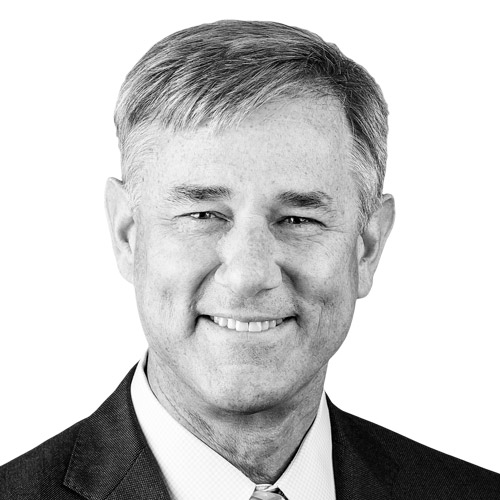There’s a classic analogy for time and life management that involves trying to fit large rocks, pebbles, sand, and water into a container. If you jump to the analogy’s conclusion, you find that in order to fit everything in at once, one must place the big rocks—the most important aspects—before anything else. Only then will there be room for the rest.
Rick Merritt describes himself as a “big rocks” thinker when it comes to his work philosophy, which means that he takes on necessities before dealing with any minutiae—departmental or otherwise. As a result, when he assumed the role of senior vice president and chief human resources officer for OSI Systems Inc. in the fall of 2014, he did so knowing it was based in California. However, it was staffed by more than six thousand people across nineteen different countries.
But that only made Merritt, a former exercise physiologist, more eager to take on those big rocks.
“If I were to make a change in an exercise program, I’d know the change it’s going to have on the various key functions of the body,” he says. “If I make a change on the compensation plan, I can tell with some level of certainty how that’s going to trickle down through the organization and what impact it’s going to have. The physiological dynamics of the human body are similar to the dynamic interdependencies of organizations. Bringing those two elements together is what’s really exciting about what I do.”
OSI Systems Inc., a diversified designer and manufacturer of specialized electronic systems and components for homeland security, healthcare, defense, and aerospace, was in need of its own form of an exercise program.
Merritt saw the need for changes in multiple areas, so he set out to redesign OSI’s HR structure, develop a globally applicable talent management strategy, and create a more reliable system for data management. If that sounds like a lot of change, it’s because it is. But that wasn’t all. Merritt sought continuous improvement in other areas, from goal setting to learning modules to a proper total rewards model.
Leading the charge for so much change is seldom easy, but pushing for necessary change is an essential aspect of Merritt’s philosophy. “Sometimes I hear, ‘Rick, thanks for driving that forward.’ Other times it’s, ‘Rick, you went too far,’” he admits. “I might think, ‘OK, I made that mistake. Now I’ll let them take a breath before I push again.’ But if the HR function and the company are not evolving, then we are falling behind, and I can never not get there. So I’m always trying to make my team a little bit uncomfortable.”
One necessary push that Merritt made was instituting a significant advancement in OSI’s in-house technology, which he says was quite dated. In getting it up to speed with current industry standards, Merritt has expanded HR’s reach—essentially doing more with less and delivering more to both employees and managers. But a challenge arose in regards to his compensation model. “It took us a little longer to get that piece in place than I originally hoped,” he says. “I think I underestimated where we were as an HR group and company and what was needed for us to move those critical elements forward.”
But it was a collection of steps toward greater transparency that is one of the best representations of Merritt’s efforts. An online portal now contains small profiles of each employee at the company. It’s the first time such information has been internet-accessible. A public posting of each individual’s work-related goals exists as well, which Merritt explains allows people to see up and down the organization and have a better understanding of the company’s goals as a whole. And over the past three years, Merritt’s team has gradually worked information about merit-based salary adjustments and bonuses to the point where directors and frontline managers can see it as easily as senior managers.
“As a result, every year that we do the performance evaluation process and the salary administration process, we learn more about what managers have not seen or information that’s incorrect because it hasn’t been put in the system properly,” he explains. “So we’re getting increasingly accurate data, which makes the company better.”
Improved technology, more accuracy and efficiency, and greater transparency is an impressive to-do list for any HR department to carry out in three years, let alone for a company of this size and scope. But Merritt recently brought his team together to take inventory and prepare for the future.
“I like to get to the top of a mountain, survey the valley below, and then determine the next mountain to climb,” he says. “Do we tweak our mission statement next? Is it still relevant, given the growth of the company? Is the structure of the organization still correct? Does it need modification? We’re doing that for the first time since launching the initial strategy three years ago.”
And when Merritt holds those meetings, he maintains one rule: everyone has to sit in a different place each time. It’s an illustration of what he calls his simple mantra: Challenge the status quo every day.
“If I can get my team to think this way on a more consistent basis, then they’ll challenge what is considered factual,” he says. “And often times, it’s not. It can be changed. It can be adjusted. You take that focus, and you apply it to the big rocks. If you can drive that level of focus, then I think you can make really significant changes.”

